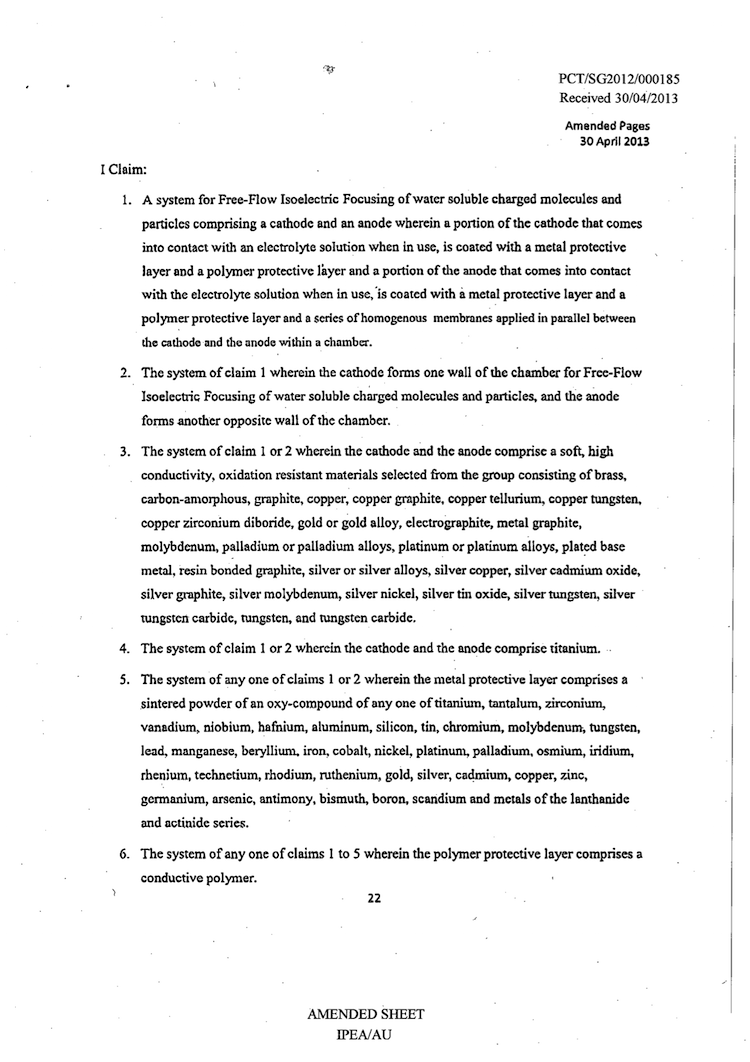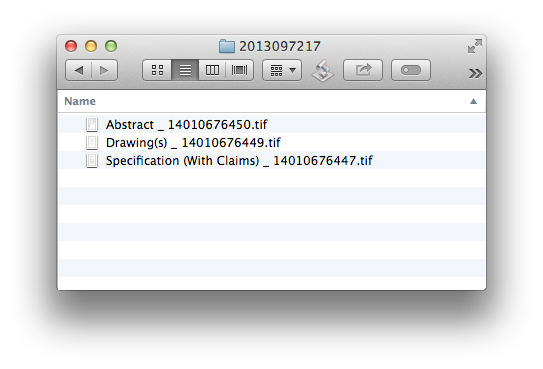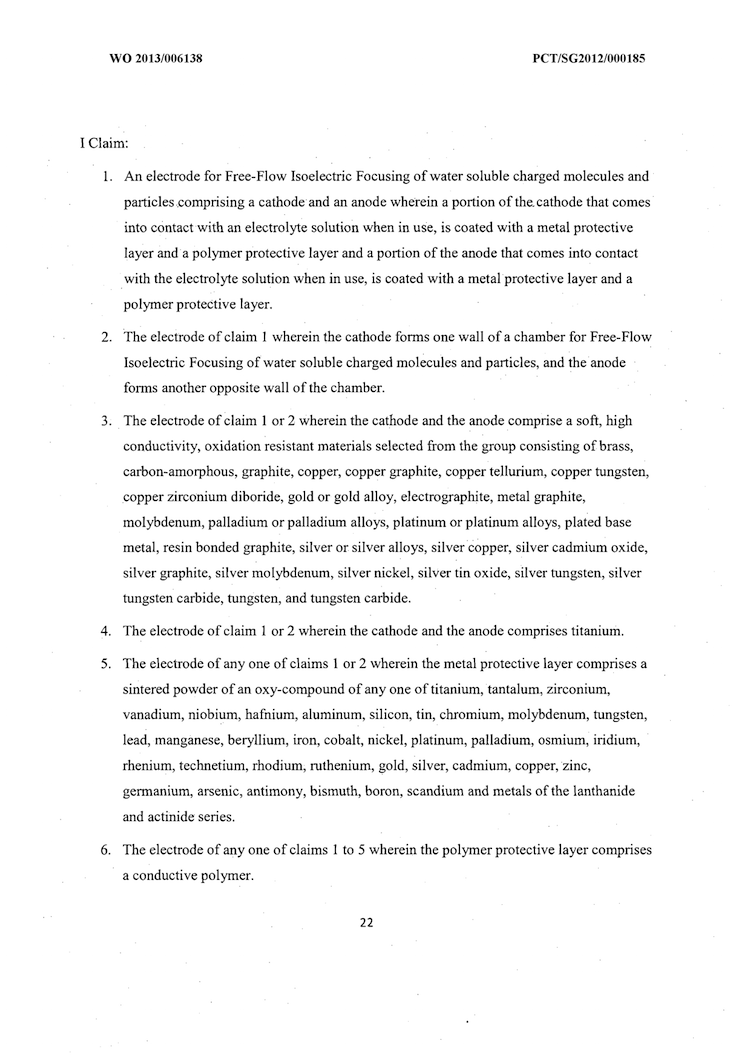The Curious Case of the Not-So-Current Claims
Singapore Intellectual Property Blog
We’ve recently had to file voluntary amendments to the patent specifications of a number of Singapore patent applications we are handling for our clients.
In the course of preparing the voluntary amendments, we’ve noticed an interesting anomaly in the patent records as kept by the Intellectual Property Office of Singapore (IPOS, the Singapore Patent Office or Singapore Patent Registry).
TL;DR
Don’t assume that the claims you see online in a file inspection at IPOS are those that are currently pending before the Singapore Patent Office, especially if the Singapore application is a PCT national phase and amendments have been made to the claims during the International phase.
Using the ePatents website, it is possible to view the register entry for any published Singapore patent application or granted Singapore patent:

As you can see, the register entry on ePatents has a link to the register extract, which contains detailed information on the patent application and the various events that have taken place (including the status of the application, the date a request for examination was filed, renewal fees due etc).
It is also possible to download the “specification” of the patent application from a link on the register entry. One would assume that this downloaded specification should correspond to the current state of the application as pending before the Singapore Patent Office (IPOS), but the actual story turns out to be slightly more complicated.
Surprise: Patent Claims on the Register Not What They Seem
We have discovered that - for some applications - the claims as downloadable from the Singapore Patent Register do not in fact correspond to those that are currently pending before the office.
The issue seems to affect those Singapore patent applications which are national phase entries of PCT applications, to which amendments have been made during Chapter II of their International Phases.
For such applications, instead of providing the claims as amended during the International Phase, IPOS is apparently providing the version of the claims in the patent specification as published by WIPO, i.e., an out-of-date claim set.
The issue does not appear to affect PCT Singapore national phase applications which have not been amended in the International Phase, nor does it appear to affect “domestic” Singapore patent applications (Singapore patent applications filed directly at IPOS).
We cannot confirm that this is the case, but the issue may also affect Singapore national phases of PCT applications in which any amendments have been made during the International Phase, after international publication (see below).
The “Correct” State of the File
Under Singapore patent law, an International Patent Application which has been filed and which designates Singapore as a designated state is treated for the purposes of the Singapore Patents Act as being a Singapore patent application (Section 85(1) of the Patents Act).
Similarly, any amendments that are made to the PCT Application during the International Phase are deemed also to be made to the Singapore application (Section 86(6) of the Patents Act).
The International application is “converted” into a Singapore patent application by the national phase deadline (30 months from the priority date), provided any fees are paid and any translations filed.
The upshot of all of this is, that if an International Application is amended during the International Phase, these amendments should automatically propagate to the Singapore Patent Application when the PCT application enters the Singapore national phase.
It does not matter whether the amendments were made as Article 19 PCT amendments, or if a Demand for Chapter II is filed, in response to a Written Opinion (ISA) under Article 34 PCT.
Instead of showing the claims as amended, however, IPOS appears to be taking the claims as published by WIPO and putting these on the file of the Singapore patent application. There is no indication that the claims in the downloadable specification are those as published or as filed; as pointed out above, the expectation is that the claims are those that are currently pending.
Example: SG 201309721-7
As an example, have a look at Singapore Patent Application Number 201309721-7, which is the Singapore national phase of International Patent Application Number PCT/SG2012/000185 (published as WO 2013/006138).
The WIPO Patentscope entry for PCT/SG2012/000185 shows that the claims were amended during Chapter II PCT. You can see the amended claims as an annex to the International Preliminary Report on Patentability (IPRP Chapter II) of PCT/SG2012/000185.
The first page of the amended claims is shown in the image below.

As you can see, Claim 1 has been amended by replacing “electrode” by “system” and by introducing an additional feature at the end of the claim. In the remaining claims, “electrode” has also been replaced by “system”, and the claim dependencies adjusted etc. Claim 9 has been deleted so that there are now 20 claims instead of 21 claims.
According to Singapore patent law (and as described above), these amendments carry over into the Singapore national phase, so we would expect the current version of the claims to be the version as amended during the International Phase, and as appended to the IPRP.
Now, take a look at the register entry for SG 201309721-7. ePatents doesn’t allow us to post direct links to register entries, so you’ll have to go to the ePatents website, enter “201309721” and “7” in the “Application No.” fields and click the 2nd “GO” button.
On the following page, click the “Specification” link and then “Click here” to download the specification for SG 201309721-7. You’ll get a folder with three files, an “Abstract”, the “Drawing(s)” and the “Specification (With Claims)”.

When you open the last document, you’ll see that the claims IPOS holds are actually those of the application as published by WIPO, and not those as amended during Chapter II.

Conclusion
Be careful - be very careful - when inspecting the Singapore Patents Register.
Don’t assume that what you’re seeing is the current version of the claims, particularly if the application is a PCT Chapter II national phase.
The safest thing to do is to wind back the prosecution of the Singapore application into the International Phase and go right back to the PCT Application as filed.
Then, work out what the claims should look like by understanding the amendments that have happened in the International Phase.
The WIPO Patentscope record for the PCT application is your friend here!
What We’re Doing
For the cases we are filing voluntary amendments on, we’ve written to IPOS to let them know that there’s something amiss:
As the Singapore national phase was entered under Chapter II PCT, and no further amendments have been made to the Singapore claims since, the claims as currently pending in the Singapore application should correspond to those as amended in the International Phase.
We see from ePatents however that the claims of the Singapore specification instead correspond to those as published by WIPO, i.e., the claims as filed. Accordingly, it would appear that ePatents has an incorrect version of the claims and we should be grateful if the Registrar could please correct the claims as necessary in your records.
The Registrar will note, for the purposes of this request for voluntary amendment, that the struck out claims in the documents being filed are those of the claims as amended in the International Phase during Chapter II. As pointed out above, these claims should be the claims as currently pending in the Singapore application. We trust that the Registrar will agree that this set of struck out claims (and not those as filed and published by WIPO as currently shown on the register) is the correct set of documents to be filed under Rule 48(2) and Section 14(1) of Practice Direction 2 of 2008.
However, my fear is that this is a general issue which affects other applications as well, not just the ones being amended. We shall have to review all our Clients’ Chapter II cases to see if they are affected. If need be, we will write to the IPOS to alert them of the issue.